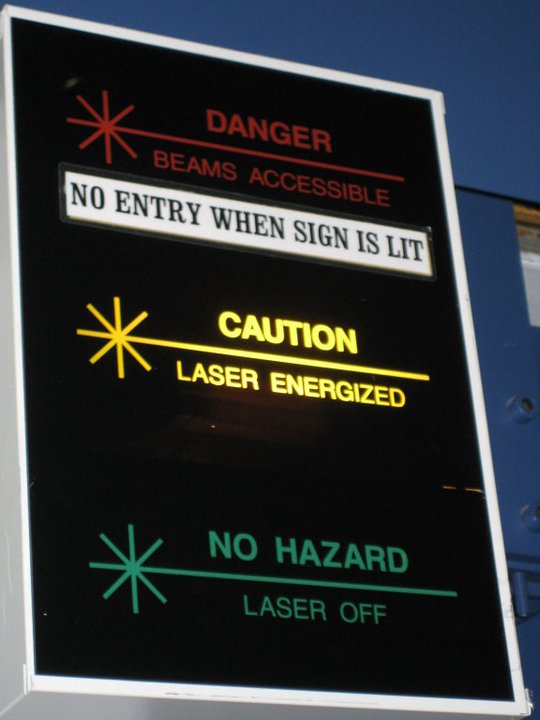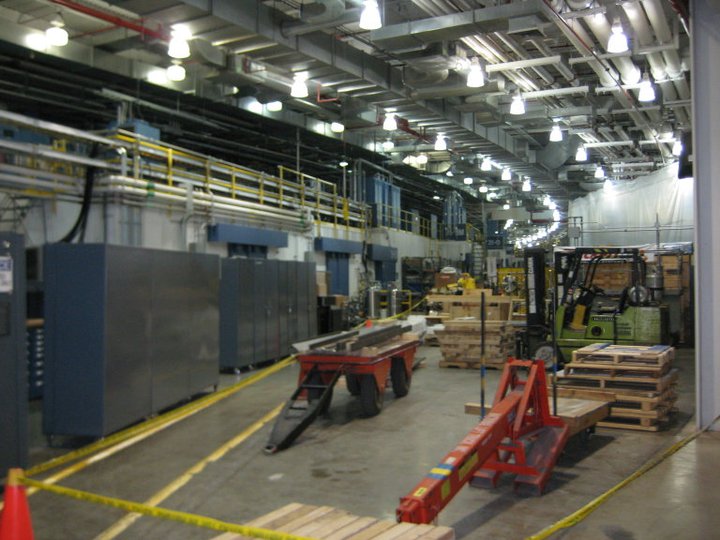When I was a young lad, I accompanied my professor on a trip to Argonne National Lab to assist with his mission to take pictures of dirt.
The lab is home to the Advanced Photon Source (APS), basically the electrons are coaxed up to (very near) the speed of light, at which point they get knocked off course by magnets of some kind and eject very high energy X-rays, which then pass through the object of interest, in our case, a small contaminated sample of dirt. The application was to better understand the flow of NAPLs (non-aqueous phase liquid i.e. liquid that doesn’t agree with water) through partially saturated soil, like say, a landfill liner which is typically composed of a thick layer of clay.
They call it, “logging beam time”. At the bar following a long day at the lab, one might say, “Yeah, I logged mad beam time last night. So hungover. Took an X-ray right to the face.”

It turns out that beam time is highly prized at the APS, so much so, that when researchers are granted access, they will work 24 hours around the clock to squeeze all they can out of their window of opportunity. That is where I come in. I was scheduled to work the graveyard shift on the beam after everyone else had gone home. I received a brief tutorial the day of from a helpful Argonne scientist. I recall trying to absorb the protocols for opening the door, positioning the sample, copying some code on the control computer and changing a few parameters around and logging the files into a database. It was a lot to absorb.

Everything was going well and I was ripping through our catalog of dirt samples. However, long into the night, fatigue began to creep in. I made a mouse mistake and copied some half-snipped block of code into the wrong place. It was hard to read where it started and stopped and control+z hadn’t been invented yet (lol, just kidding). My mind just kinda froze. I lost focus. Bad thoughts permeated my consciousness, the dreaded waking nightmare. I was convinced were I to open the door, a Chernobyl-level radiation dosage was all mine. Perhaps an hour or two later the sun rose, yet I remained transfixed at the station seeing strange patterns in the code.
Thankfully my advisor arrived early to check on me. How’s it going Jeff?
UHHHHHHHHHHHHHHHHHHHHHHHHHHHHHHHHHHHHHH
I began babbling incoherently trying to explain what happened –
Dante cut me off . It’s OK Jeff. Just go back to your room and get some rest. I can take it from here.
OK thanks Dante I said.
Everything worked out just fine. I think Dante and his collaborator got some good pictures. I wasn’t directly involved in the project so the trip to Argonne had been more of a one-off for me, but it was quite a poignant, formative experience and one I have reflected on from time to time since then. Playing like a movie in which the picture remains unchanged, but my own interpretation of it filtered through the lens of age continually changes.

I guess what endures the most are Dante’s words of encouragement after the long lonely night at the beam. As I moved along in my field (geotechnical engineering) over more than a decade now, I appreciate the quality of “stick-to-it-iveness” more and more. It’s not about smarts but moreso how hard you try. Such an attitude helps combat the “imposter syndrome” that many of us deal with as well, that realization that everyone else isn’t just gliding along effortlessly, but enduring the same setbacks as yourself.
…
…
…
In my more dramatic moments (which are numerous) , I find a tenuous parallel to that earlier mentioned radio – disaster at Chernobyl, one which saw the operators trying to understand an opaque control system in the young hours of the night. Also I just finished reading “Midnight in Chernobyl” by Adam Higginbotham and am looking to parlay this post into an impromptu book review because I enjoyed it so much. I also wanted to note a few distinctions between the book and the HBO TV show (the former undoubtably a more accurate rendering of the events in the control room leading up to the disaster). I will not go into any background and assume a familiarity with the book and TV show. Check out “That Chernobyl Guy” channel on youtube for extremely well-researched content if you can.
Let’s start with the most important thing first. The operators performed the test without incident, in which the main water circulation pumps were turned off, and water was pushed through the core solely by power generated from the steam turbine spinning down. Akimov instructed Toptunov to push the AZ-5 button upon completion of the test to shut down the reactor as intended, since the following day the reactor was scheduled to be re-fueled. This is a huge difference from what is portrayed in the HBO show, which depicts a furious Dyatlov ordering everyone around, perhaps one could tolerate this on its own, but the show goes so far as to imply that Akimov and the other operators KNEW in advance of the explosion how dangerous it would be to conduct the test. Quite frankly, they did not know of the danger and the atmosphere in the control room was one of careful collaborative interest, so much so that even Yuri Tregub, the reactor control engineer from the prior shift, stayed late and was in the room to observe the test.
Now go back in time. The reactor was, in actuality, in a very bad state. The reactivity was “imbalanced” geometrically due to the fuel being depleted prior to re-fueling (my understanding: a consequence of poor reactor design and an artifact of a hugely massive reactor volume). The test was delayed due to a regional grid request for more power to meet evening demand. Toptunov made a mistake engaging an automatic control which saw far too many control rods inserted into the core drastically dropping the power level.
All this to say, the operators were forced to remove almost every single control rod to bring the power level back up prior to performing the test, designed to assess whether the steam turbines could push enough water through the core to keep it cool before the diesel generators came online in the event of a power outage to the plant.
This is where I see the parallel to my situation at Argonne and that of the operators at Chernobyl. They did not understand what was going on. They had no clue the reactor was in a dangerous state prior to performing their test. They didn’t understand that, with the control rods withdrawn, a reduction in pressurized water (liquid phase) through the core would cause it to heat up even more due to the xenon poisoning built up throughout an unplanned day of running along at half power. They didn’t know the “positive void coefficient” and the graphite-tipped control rods could act as a steam detonator blowing the many tons biological shield through the reactor hall and into the night sky.
This leads to the main point I wanted to make – the control system I was operating at Argonne did not allow for dangerous conditions to develop. I could have copied any number of blunders into the code and everything would be fine every time, because the system was carefully designed with safeguards in mind. This brings into contrast the true source of the tragedy at Chernobyl and one the HBO show does not even remotely acknowledge (where Adam Higginbotham’s book absolutely does) : it was the DESIGNERS of the reactor who were at fault, NOT THE OPERATORS. Anatoly Aleksandrov et al. and the leaders of the Soviet Ministry of Medium Machine Building were seen as infallible gods of atomic science. They refused to acknowledge flaws in the reactor design despite earlier meltdowns and near misses. They blamed the operators, learned nothing, and the Soviet Union crumbled just a few years later. The truth wins every time. It doesn’t care about your beliefs or personal ambitions. And at least that is one area where the HBO show shines (highlighting Legasov’s “the cost of lies”), even if the blame is cast upon the hapless operators rather than the Soviet machine.
I find these many stories of Chernobyl endlessly captivating… sometimes I place the Argonne version of myself in the control room that night and imagine what might I have done? The answer based on the above, of course, is to follow the test plan just as the operators did. They were all very accomplished in their field and did their best to deal with the disaster. Toptunov and Akimov absorbed a lethal dose of radiation many times over trying to pump water into the reactor after it exploded. The irony in this endeavor utterly heartbreaking. I think about the heavy burden of designing life safety systems yet find in this burden a deep well spring of motivation to try hard and keep learning to be the best engineer I can be.
